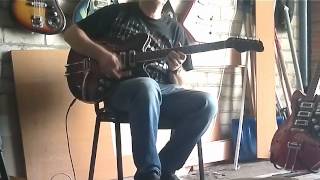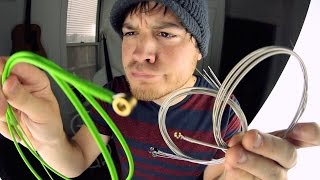Monday, 22 December, 2025г.
















Где искать: по сайтам Запорожской области, статьи, видео ролики
пример: покупка автомобиля в Запорожье
Antoria vintage archtop refurb and set up
This video shows me refurbing a gorgeous old Antoria archtop acoustic that I found by chance on sale locally. I got it for the kind of money that it wouldn't matter if I couldn't get it playing well again.
On first inspection, the guitar was evidently very old and some research pointed at a late 1950s / early 1960s date of production either in West Germany (as it then was) or Japan. The neck is very thick since it has no truss rod supporting it, so all the stiffness has to be provided by the wood alone. Despite this, after 50 years of playing (or sitting in an attic judging by the presence of woodworm holes) the neck had a pronounced curvature giving it way too much relief.
The tuners were broken (no problem as I wanted to replace them) and the string positioning was at least 5mm off. This may have been the result of the neck moving over time (?) or the bridge being incorrectly positioned; either way, the options for correcting it ranged from the simple - reposition the saddle alone - to the complex - move the entire bridge or re-set the neck. The frets were, understandably, pretty worn out.
The finish of the guitar is 'tired' but authentically old and it has a lovely weathered light colour. The front is a 2ply construction and the back seems to be a solid wood.
My first decision was to de-fret the guitar and based on the thickness of the neck & fingerboard I decided to 'level' off the curvature. This would leave the neck physically bent but flatten off the curve so we could start again from flat. This turned out to be a good move and I was able to achieve a dead flat fingerboard (with strings off) which I then proceeded to re-fret. At this point I chose jumbo fret wire which, while not period appropriate, would give me more options in case the neck didn't re-curve adequately under string load - something I wasn't going to be able to tell until I loaded it with strings.
I re-fretted, installed a new nut to work with the 'zero fret' set up (a very sensible technology) and procured some genuine Gibson deluxe tuners that suited the guitar perfectly. With this done, I was able to re-string and test the basic playability of the guitar i.e. had the 'flattening' worked? And did the string load pull the right amount of relief now into the neck?
I'm pleased to say that the answer was 'yes'. Even without having done the precision fret levelling, I could tell this was going to play well and sound great so was very motivated to get on and complete the process.
I precision levelled with the guitar strung and under load; the result was a beautiful-to-play vintage guitar. I know for a fact that there won't be another one out there that plays this well - as research has shown me that ALL the other guitars of this model out there have permanently curved necks as the result of the string loading over the years.
Will this neck bend again over time? Yes. Will it play beautifully well for the next 10 - 20 years? I hope so :-)
All in all, well worth doing and I've ended up with a guitar that I - and the wife - love.
Похожие видео
Мой аккаунт


 У вашего броузера проблема в совместимости с HTML5
У вашего броузера проблема в совместимости с HTML5


